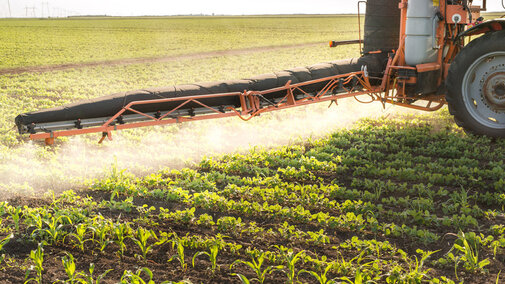This Feb. 28, 2022, the EPA will revoke all food tolerances — the tolerable amount of pesticide residue present on or in food — for chlorpyrifos. Producers are not allowed to apply chlorpyrifos on any food or feed products after that date. This statement means that any food or feed items treated with any product containing chlorpyrifos will result in the inability to sell those foods or feed.
Non-food use of chlorpyrifos is still allowed as of Feb. 1, 2022, but chlorpyrifos registration is due for review in 2022. Products can only be applied to the site listed on the label. Misuse of pesticides may result in harm to humans, the environment, and potentially fines or citations.
This change comes from concern for public health and links to neurodevelopmental effects on humans.
Chlorpyrifos was first registered for use as an insecticide in the United States in 1965. It was reregistered in 2006. Its use has ranged from corn and soybeans to fruit and nut trees. It is an organophosphate insecticide. Due to their acute toxicity to humans, most organophosphate insecticides have already been phased out of production.
Applications Before Feb. 28:
- Applications done prior to that date with a record of proper, lawful use of the product should not be affected if FDA guidelines are followed. These applications must be documented and available to the FDA before the period of acceptance is met. Currently that period is anticipated to end in August of 2026, but that may change.
- Specific commodities with lawful application before the date listed above will have a grace period (period of time depends on the commodity, see link at the bottom for specifics) where the FDA will not request documentation on the presence of chlorpyrifos residues.
Disposal of Remaining Chlorpyrifos:
- Remaining chlorpyrifos cannot be applied to any site that is not listed on the label.
- Remaining chlorpyrifos cannot be applied to any food or feed that will result in residues within the food chain.
- Chlorpyrifos can be used on food products for export but those products must meet certain conditions. See this document for more information.
- Contact a local hazardous waste facility. See the Pesticide Safety Education Program site for some locations or use the Nebraska Department of Agriculture’s recycling database to find locations.
- Contact your pesticide dealer to determine if they will take leftover product.
The FDA has also released a guidance document for producers addressing “Channels of Trade Policy for Human Food Commodities with Chlorpyrifos Residues”. See the document for more information.
The loss of crop protection tools such as chlorpyrifos can make pest management a difficult task. The impact of its removal may mean that you, the producer, may need to find other tools to manage insects in your operations. As we enter the spring months, it is important to start considering alternative products. The Guide for Weed, Disease, and Insect Management in Nebraska has product-specific information that can aid in management decisions. See Nebraska Extension’s marketplace site to purchase this guidebook.
Another great option is to contact your local extension educator or entomology specialist to get assistance in pest management decisions. The University of Nebraska’s extension family is here to help you.

